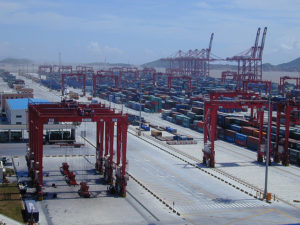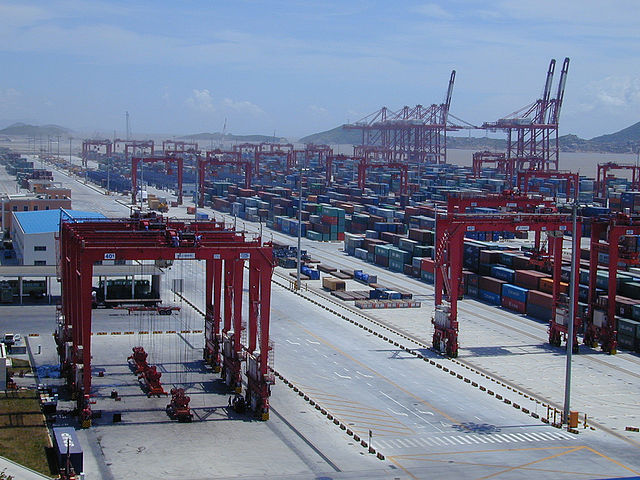 Growth in intra-Asian box trade accelerated notably in 2016, helping to improve demand levels in the boxship sector.
Growth in intra-Asian box trade accelerated notably in 2016, helping to improve demand levels in the boxship sector.
In a new analysis, Clarksons Research Services said intra-Asian container trade totaled an estimated 52 million TEUs in 2016, accounting for around 29% of global box volumes. More than half of box trade within the region involves China, with trends in the Chinese economy key drivers of intra-Asian volume growth.
In 2015, turbulence in the Chinese economy contributed to a slowing of intra-Asian box trade growth to 3.0%, but seemingly reduced uncertainty surrounding China, along with robust growth elsewhere in developing Asia in 2016, boosted expansion in intra-regional container trade to an estimated 5.6%.
Meanwhile, boxship capacity deployed on intra-Asian routes has continued to increase, standing at about 1.8 million TEUs in nominal terms at the start of 2017. Intra-Asian deployment trends have a major influence on the wider containership market, with upsizing on intra-Asian routes having in the past limited demand in the charter market for smaller ships.
The share of deployed capacity on intra-Asian routes accounted for by ships of more than 3,000 TEUs rose from 10% in early 2012, to around 25% in mid-2014, before falling to 23% by the start of 2016 as opportunities to “cascade” further larger ships onto the intra-Asian arena became more limited.
Last year, the volume of capacity deployed on routes within Asia on ships under 3,000 TEUs remained steady in 2016, and deployment of ships over 3,000 TEUs rose to 29% of total intra-Asian deployment of 500,000 TEUs in capacity.
However, this appears to be quite a limited increase in view of recent history and the robust rate of trade growth. Deployment of container ships was up marginally from the previous peak of 26% at the start of 2015, and perhaps less dramatic than might have been expected, said Clarksons.
More than half of the total increase in the deployment of over 3,000-TEU ships last year was accounted for by greater deployment on relatively longer haul routes connecting East Asia (including China, Japan and Korea) with Southeast Asia. This is where one might expect the additional deployment of larger ships, Clarksons said.
However, the number of over 3,000-TEU ships deployed on coastal Chinese routes has also increased, rising by around 10 ships to 44 vessels; it was not the main element of the increase, but it is probably worth watching closely in terms of future upsizing opportunities, the report said.
Photo: Alex Needham





